Excerpts from Jim Conrad's
NATURALIST Newsletter
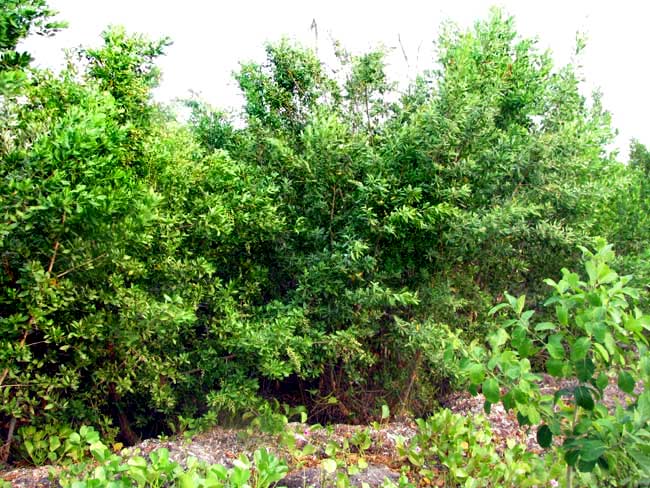
from the May 8, 2011 Newsletter issued from Mayan Beach Garden Inn 20 kms north of Mahahual; Caribbean coastal beach and mangroves, ~N18.89°, ~W87.64°, Quintana Roo state, MÉXICO
BUTTONWOOD MANGROVE
The low sand ridge I'm living on now is bordered by the Caribbean to the east and a vast mangrove swamp to the west. In this part of the world four different woody species are known as mangroves. The species forming a wall on our eastern side is Buttonwood, CONOCARPUS ERECTUS, a member of the mostly tropical Combretum Family. You can see its 10-ft-high face above.
Usually Buttonwoods bear flowers and/or fruits in distinctive, cone-like clusters, as shown below:
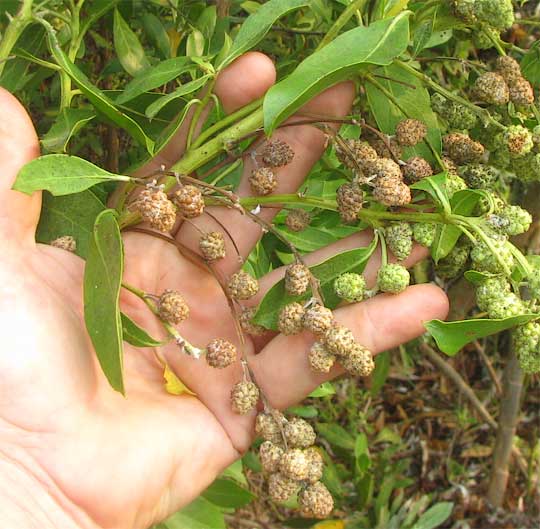
In that picture the brownish clusters at the left are more mature. At the peak of maturity the clusters crumble into separate fruits.
If you can't find a tree with flowers or fruits, Buttonwood's leathery, evergreen, alternate, simple leaves with entire margins are similar to several other woody trees in this area. However, the trees' petioles, or leaf stems, bear a distinctive pair of bulging glands, as shown at the left in the picture below:
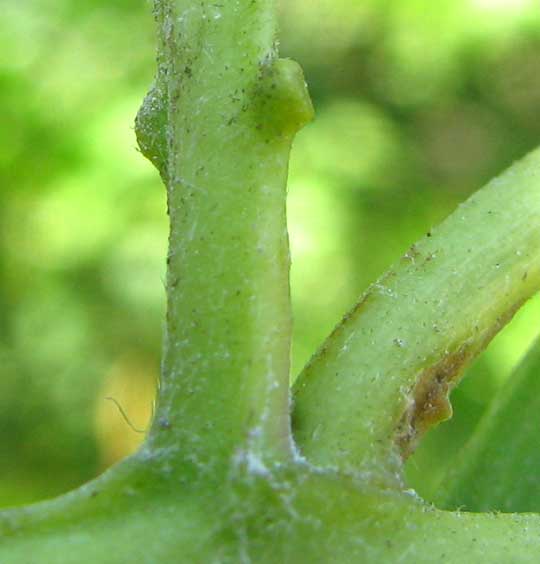
As you'd expect of a mangrove, Buttonwood lives in brackish or saline environments, the term brackish referring to water that's saltier than fresh water but not as salty as seawater. My impression is that of the four mangrove species Buttonwood occupies soil spending less time underwater than the other three species. In fact, Buttonwoods can be grown on dry land well away from the ocean.
Ecologically, Buttonwood is noted for withstanding high winds better than the other mangrove species. Often it occurs at the edge of mangrove swamps, serving as a buffer for the ecosystem. Buttonwood thickets provide habitat for many species, including crabs and Bald Eagles. Unfortunately, its wood, which is exceptionally heavy, makes excellent firewood and is cut for charcoal production.
Buttonwood is distributed from central Florida through the Caribbean, and northern Mexico south to Ecuador and Brazil, as well as western tropical Africa.
from the May 24, 2015 Newsletter issued from Río Lagartos, on the Yucatan Peninsula's northern coast (~N21.60°, ~W88.16°), Yucatán state, MÉXICO
BUTTONWOOD FLOWERING
Nowadays Buttonwoods are producing small, ball-shaped heads of unisexual and bisexual flowers arranged in panicle-type inflorescences. Below, you can see clusters of male flowers:
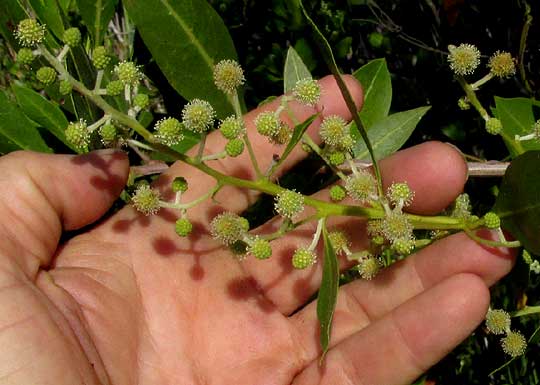
A close-up of a single head of male flowers bristling with anther-tipped stamens arising from densely crammed-together flowers is shown below:
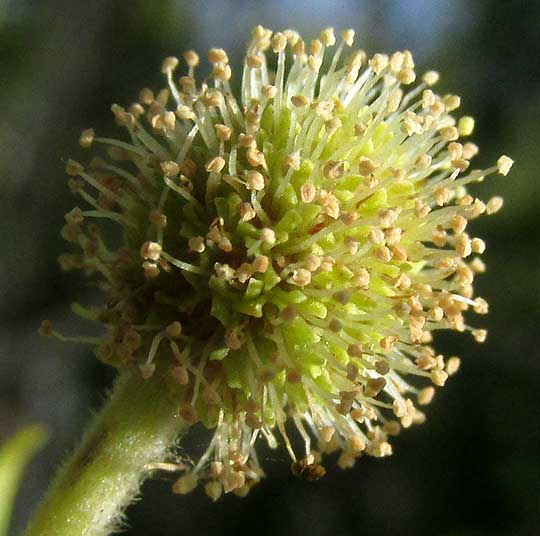
Buttonwood flowers lack corollas, but their 5-sepaled calyxes look like green, hairy-bottomed corollas, as shown below:
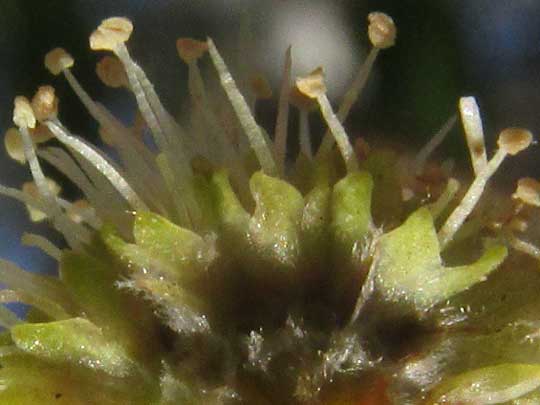
Bisexual flowers -- those with both functioning male and female parts -- also occur in spherical heads, but with fewer and shorter stamens, those heads aren't as fuzzy looking as those strictly composed of male flowers. Below, you can see a ball of female flowers in which dark stigmas tip the single white styles arising atop each ovary:
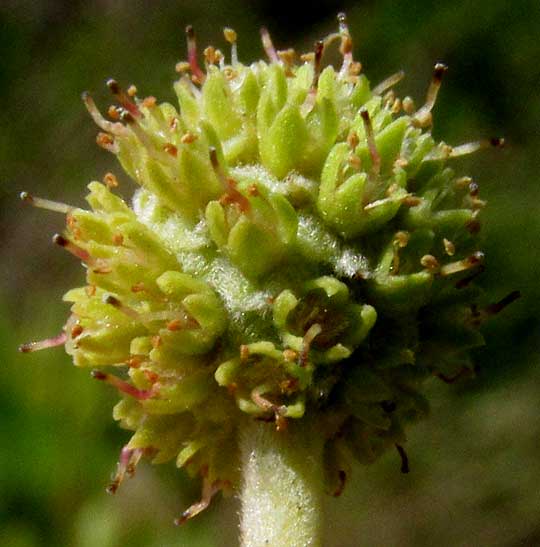
Buttonwood flowers are " inferior," meaning that their sepals and stamens arise above their ovaries. A picture showing female flowers more developed than those in the above picture, with hairy-topped ovaries swelling and pressing against one another as the ball grows, is shown below:
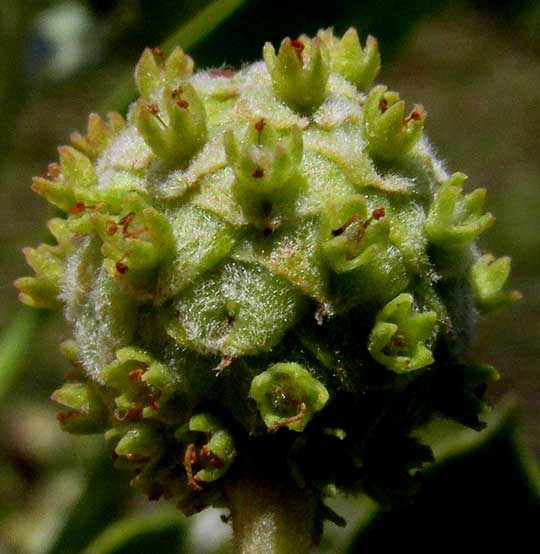
Eventually the corollas are cast off and the squeezed-together ovaries turn brown as they mature into drupe-like (one-seeded) fruits, as shown below:
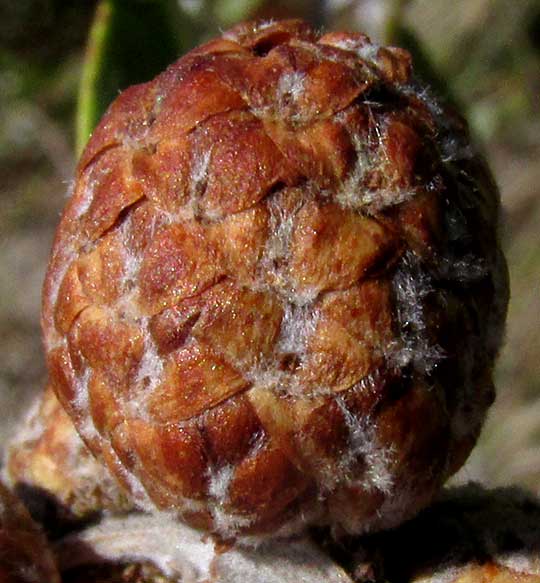
Later these brown, mature balls will harden, the individual ovaries will shrink and pull apart somewhat, and the ball will become crumbly, with individual fruits falling away.
Previously we looked at the pair of conspicuous glands on the Buttonwood leaf's petiole where it attaches to the blade. Historically those glands have been supposed to be salt-excretion glands, but now it's thought that they're just nectar glands that attract ants in a kind of symbiotic relationship. The gland situation isn't really well understood. This week while taking another look at the glands I noticed that many leaves also bear crater-shaped glands at the base of veins along the leaves' midribs, and even elsewhere on the blade's lower surface, as shown below:
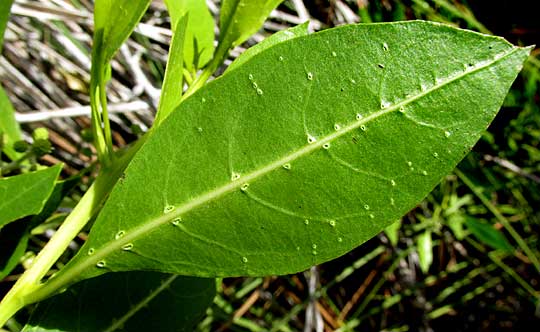
A close-up of some glands is shown below:
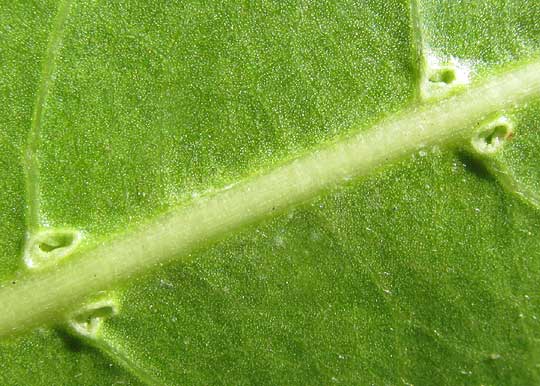
Whatever service these glands provide for the Buttonwood, it must be important for them to be so prominent on the leaves.